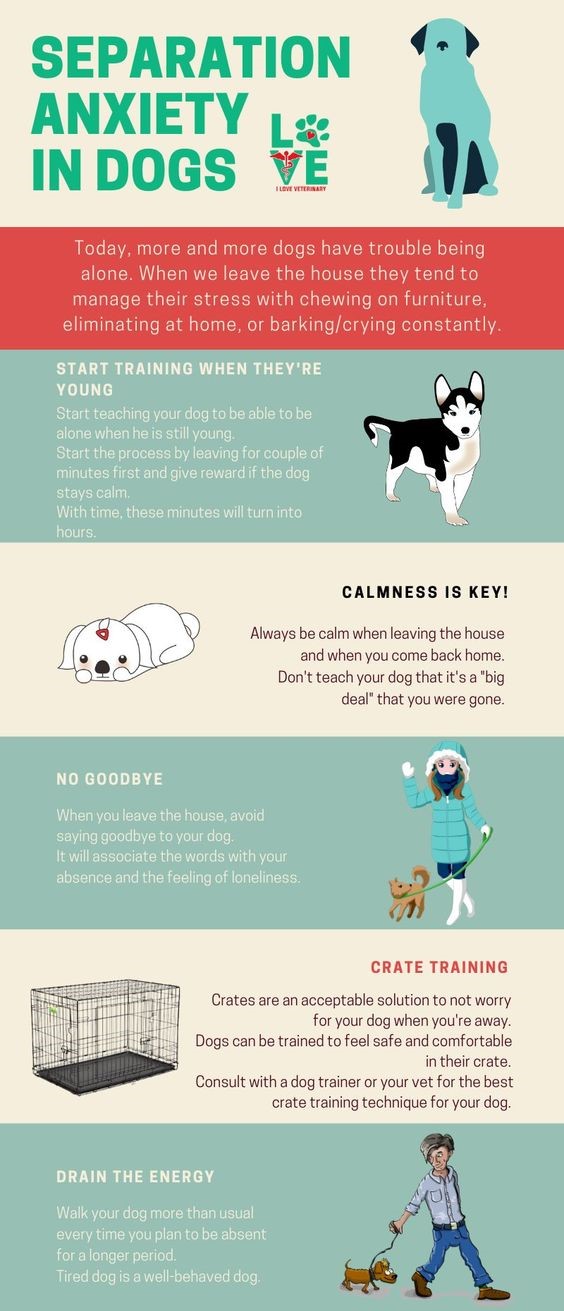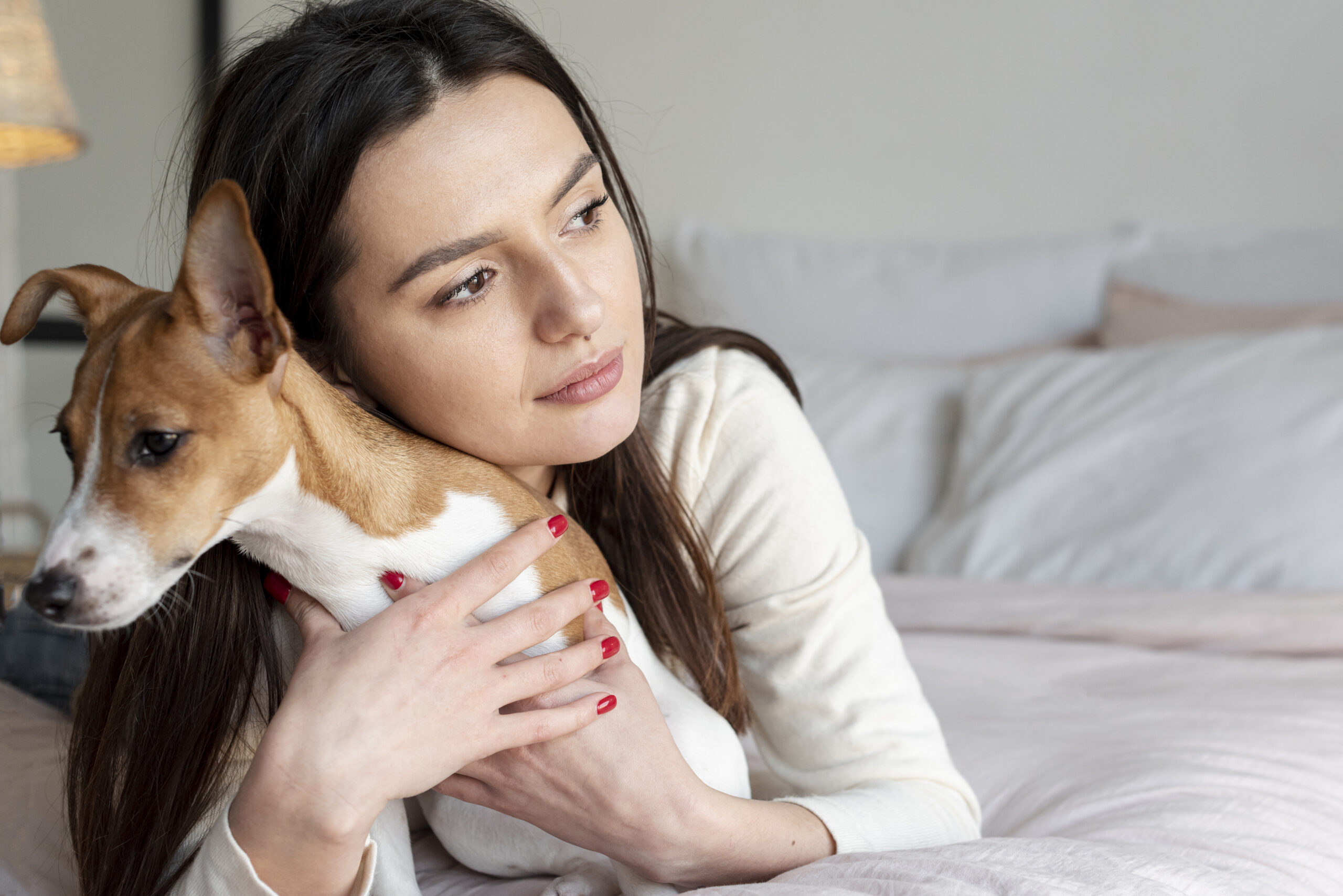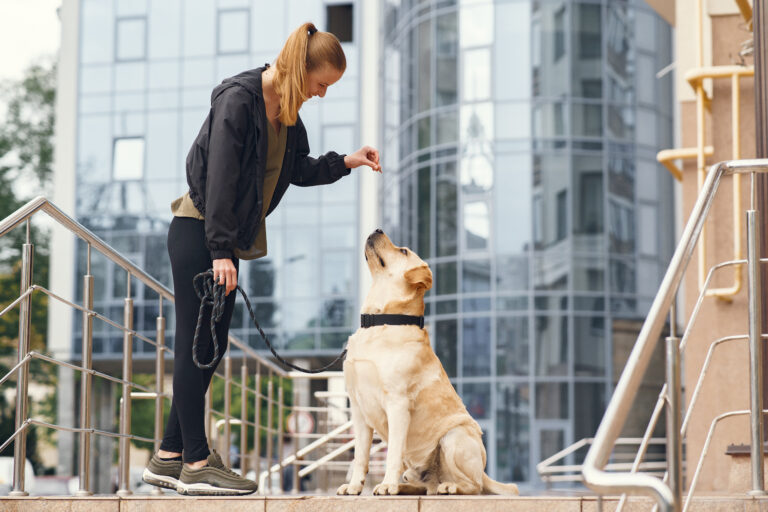Training Your Dog To Be Independent: Helping Your Pup Overcome Separation Anxiety
Teaching your dog to be independent is essential for fostering confidence and reducing stress in both you and your pup. Training your dog to be independent involves implementing strategies that help your dog overcome separation anxiety, making transitions easier when you leave. In this article, we’ll explore practical techniques to support your dog’s journey toward independence.
Historically, certain dog breeds were developed for companionship, leading to a heightened dependency on humans. Addressing this requires a blend of consistency and the gradual introduction of independence. Techniques such as desensitization, positive reinforcement, and structured absences are vital strategies in alleviating stress and promoting autonomy in our furry friends.

Training Your Dog to Be Independent: Helping Your Pup Overcome Separation Anxiety
Separation anxiety is a common issue that dogs face when left alone. This anxiety can lead to behaviors like barking, chewing, or pacing. It’s important to address these habits early. By training your dog to be more independent, you can reduce these stress-induced behaviors. A consistent routine makes your dog more comfortable and confident when alone.
Start by identifying the signs of separation anxiety in your dog. Some of these symptoms include whining, excessive barking, and destructive behavior. To counteract these issues, incorporate brief periods where the dog is by itself. Gradually increase the duration over time. This gradual process helps dogs get used to being alone in a safe manner.
Training methods such as crate training and positive reinforcement can be effective. Crate training provides a safe space for dogs, helping them feel secure. Positive reinforcement encourages them to remain calm by rewarding good behavior. You can reward your dog with treats or affection. These methods gradually build a dog’s confidence to stay alone.
Establishing long-term independence requires patience and consistency. In addition to training, provide engaging toys to occupy their time when alone. Remember, exercise is crucial to help burn off excess energy. A tired dog is often a well-behaved dog. By following this approach, your pet can learn to enjoy time on its own without stress.
Defining the Problem: What is Dog Separation Anxiety?
Dog separation anxiety is a behavioral issue that occurs when dogs become overly distressed when left alone. This anxiety can manifest through various unwanted behaviors that are stressful for both pets and owners. Common signs include whining, scratching at doors, and chewing furniture. This isn’t just the dog being naughty; it’s a genuine emotional response. Recognizing these signs early can help in addressing the problem effectively.
Some dogs may experience separation anxiety due to a change in their routine. A new schedule, moving homes, or changes in family dynamics can trigger anxiety. The absence of familiar people is unsettling for many pets.
- Changes in daily activities
- Lack of previous socialization experiences
- Sudden absence of a family member
all may contribute to the problem. Understanding the roots of anxiety is critical for finding the right solution.
Dogs often see their owners as a source of safety and affection. When separated from them, some pets may panic. This panic can cause them to howl or destroy items around the house. Panic behaviors not only make the dog feel worse but can create a tense environment at home. Identifying these behaviors is the first step toward easing the dog’s anxiety.
Long-term anxiety can lead to more serious health problems, so addressing it early is essential. Dog owners often find success with training techniques that focus on desensitization and creating a calm environment.
| Technique | Description |
|---|---|
| Desensitization | Gradually getting the dog used to being alone |
| Positive Reinforcement | Rewarding calm behavior |
These strategies not only help manage current anxiety but also prevent future stress. A thoughtful approach can make a significant difference in a dog’s wellbeing.
Recognizing the Signs of Separation Anxiety in Dogs
Understanding the signs of separation anxiety is crucial for pet owners. Some dogs become restless and may start pacing when they sense their owner is leaving. Others might bark continuously or whine when separated. These behaviors can be signs of distress rather than just disobedience. Timely recognition can help manage the issue effectively.
One of the more destructive signs of separation anxiety is chewing on furniture. Dogs can also scratch doors and windows, causing damage. This behavior is an outlet for their anxiety.
- Excessive drooling
- Panting
- Shaking
might also accompany these actions. It’s important to note these signs for proper intervention.
Accidents in the house can be another indicator. Even house-trained dogs may urinate or defecate indoors when left alone. Do not mistake this for disobedience; it’s often a reaction to stress. Observing these early clues can indicate the need for behavioral adjustments. Addressing these symptoms promptly makes a difference in your dog’s comfort.
Monitoring your dog’s behavior through a camera can be helpful. This allows you to see patterns when you’re not at home.
| Time | Behavior |
|---|---|
| Morning | Barking |
| Noon | Pacing |
| Evening | Crying |
By noting these patterns, dog owners can better understand their pet’s stress triggers. This understanding can lead to more effective solutions.
Effective Training Techniques for Building Independence
Building independence in dogs starts with establishing strong, consistent routines. Structure makes dogs feel secure and aware of what to expect daily. By setting regular times for feeding, walks, and rest, dogs learn to rely less on constant attention for comfort. Over time, this pattern of predictability helps build confidence in doing things alone. Routine not only reduces anxiety but also promotes overall well-being.
Crate training is a valuable tool in fostering independence. A crate serves as a safe and cozy den for the dog, reflecting their natural habits.
- Choose a crate that is the right size
- Make it comfortable with bedding
- Introduce it gradually
these steps ensure the crate is inviting. When used properly, crates help dogs learn to self-soothe, a vital skill for independence.
Desensitization involves getting the dog used to being alone without anxiety. Start with short durations and gradually increase the time you are away. Praise and rewards when you return encourage calm behavior. It’s a gradual process, but patience is key. This method helps reduce panic when left alone.
Teaching basic commands can support independence too. Commands like “stay” and “wait” help manage the dog’s impulsive behavior. Practicing these in various situations builds trust in your guidance. As your dog grows more comfortable with these commands, they learn to trust their environment without constant reassurance. This skill translates to fewer symptoms of separation anxiety.
Interactive toys also play a role in building independence. These can distract and entertain your dog while alone. Puzzle toys or treat-dispensing toys engage their brain and provide mental stimulation. When they concentrate on these toys, they naturally shift their focus from separating stress. This keeps them occupied and less anxious.
Using Positive Reinforcement in Overcoming Separation Anxiety
Positive reinforcement is a powerful tool in addressing separation anxiety in dogs. By rewarding good behavior, dogs learn to associate being alone with positive outcomes. Treats, praise, and affection are common forms of positive reinforcement. Consistent use of these rewards encourages calm behavior. It shifts the dog’s focus from anxiety to anticipation of a reward.
Set small, achievable goals for your dog when you’re away. Start by leaving the room for short periods. When you return, reward your dog for staying calm. Gradually increase the time intervals as your dog shows improvement. This method helps build confidence and reduces fear.
Rewarding calm behavior during daily routines also reinforces stability. When your dog remains relaxed during meal prep or when getting ready to leave, offer a treat.
- Stay consistent in rewarding calmness
- Use praise generously
- Incorporate playtime as a reward
these practices make coping methods second nature for the pet. Eventually, calm behavior becomes a natural habit.
Avoid rewarding behaviors that stem from anxiety, such as barking or jumping. Wait for the pet to settle before offering a reward. This ensures they understand that relaxation, not anxiety, attracts attention. Training sessions should remain short and engaging. By maintaining a positive atmosphere, dogs are less prone to stress and more receptive to learning.
Some dogs respond well to clicker training, which can enhance positive reinforcement. Using a clicker helps mark the exact moment of the good behavior.
| Steps | Description |
|---|---|
| Click | When the dog performs the desired action |
| Reward | Immediately offer a treat or praise |
This precise feedback helps the dog quickly understand the link between actions and rewards. It’s another way to boost your training effectiveness.
Long-Term Strategies for Maintaining Independence in Dogs
Maintaining independence in dogs requires a blend of training, patience, and consistency. Regular interaction with different environments helps boost a dog’s confidence. Taking them to parks or different parts of your neighborhood can be beneficial. Mixing up their experiences reduces anxiety around new activities. It also encourages social skills that aid in independence.
Interactive play is another effective tool for long-term success. Games that challenge a dog’s mind, like puzzle toys, keep them engaged. This mental stimulation fosters problem-solving abilities, which are critical for building independence. Dogs learn to entertain themselves without relying on their owners. This skill proves useful during alone time.
Balanced exercise routines are essential for maintaining independence. Regular walks and play sessions help burn off extra energy, lessening anxious behaviors. Over-exercising can lead to stress, so maintaining a balance is key.
- Morning walks to start the day
- Short play sessions in the afternoon
- Calm evening activities
create a routine that keeps them fit and content.
Establishing a calm, secure space within your home is important. This could be a favorite spot with their bed, toys, and water. Dogs should feel safe and have an area to retreat to if feeling overwhelmed. It encourages them to relax and enjoy solitary moments. Knowing they have a haven reduces anxiety.
Training classes or social groups can further promote independence. These environments introduce dogs to new faces and situations.
| Activity | Benefit |
|---|---|
| Training classes | Learn new commands |
| Social groups | Interact with other dogs |
These activities prepare them for diverse experiences, ensuring they adapt with ease. Engaging in these programs helps solidify their independent demeanor.

Frequently Asked Questions
Understanding and addressing separation anxiety requires specific strategies to help your dog thrive. Here are some questions commonly asked by pet owners dealing with this issue.
1. What are the first signs of separation anxiety in dogs?
Separation anxiety in dogs often starts with subtle signs which can be easy to miss. Many dogs begin to exhibit behaviors such as pacing, whining, or becoming overly attached when they sense their owner leaving. These early warnings are crucial to identify, as they can progress into more severe anxiety-related actions.
As the anxiety increases, you might notice your dog engaging in destructive behavior. Chewing furniture, barking continuously, or even trying to escape are common. Recognizing these behaviors early can lead to timely intervention, helping your dog adapt more comfortably to being alone.
2. Can exercise help reduce separation anxiety in dogs?
Exercise plays a significant role in reducing separation anxiety. Regular physical activity helps release pent-up energy, which can otherwise manifest as anxiety and lead to restless behavior when left alone. A well-exercised dog is often calmer and more relaxed, reducing the stress of separation.
Incorporating routine walks or playtime before leaving home can make a noticeable difference. This practice not only tires your dog physically but also mentally prepares them for some alone time. Ensuring they have an outlet for their energy is a proactive step in managing separation anxiety effectively.
3. How does crate training support independence in dogs?
Crate training provides a safe haven for your dog, which mimics a natural den-like environment. When introduced correctly, it helps reassure them by offering a personal space where they feel secure. This security reduces anxiety, especially during times of separation from their owner.
Moreover, a crate can serve as a calm retreat for your dog. Familiarization with the crate enables them to relax independently, fostering a sense of reassurance even when they’re alone. This contributes to building overall independence and confidence in your dog.
4. Is it possible to cure separation anxiety completely?
While there is no one-size-fits-all answer, many dogs can significantly improve with consistent training. Developing a comprehensive plan that includes gradual exposure, positive reinforcement, and behavioral modifications can lead to considerable results over time. Some dogs may always show mild signs of anxiety, but most can adapt well to being left alone.
It’s important to be patient and seek professional help if needed. Consulting a veterinarian or a certified dog trainer can offer additional strategies tailored to your dog’s specific needs. This guidance can be essential in achieving a balanced and independent pet.
5. What role does routine play in managing separation anxiety for dogs?
Establishing a predictable routine can drastically help in minimizing your dog’s anxiety. Dogs thrive on consistency, which aids in making them feel secure and aware of their daily schedule. A structured routine can include regular feeding times, walks, and play sessions, all contributing to a sense of normalcy and stability.
When dogs understand what to expect, they are more likely to adapt to periods of separation. This predictability helps lower stress levels and nurtures independence. Maintaining a regular schedule is a simple yet effective way to help your dog cope with separation anxiety.
Conclusion
Helping your dog overcome separation anxiety is a journey that requires patience, consistency, and understanding. By using effective training techniques and reinforcing positive behavior, you can guide your dog toward independence. It’s essential to recognize stress signals early and adjust your approach as needed.
Maintaining a structured routine and fostering a secure environment are foundational strategies. These practices not only support your dog’s mental well-being but also strengthen the bond between you. With time and the right methods, many dogs can thrive even in times of solitude.



